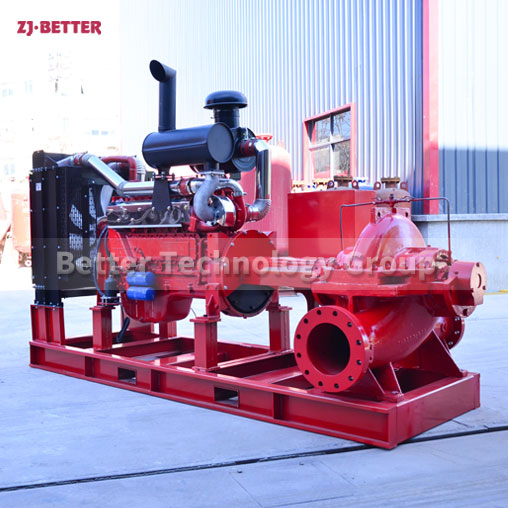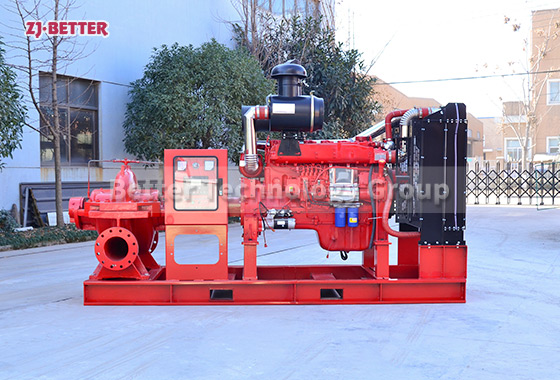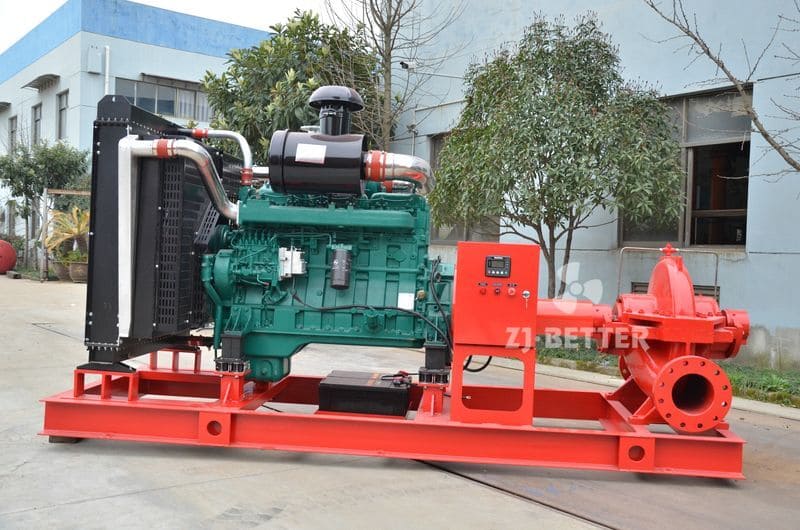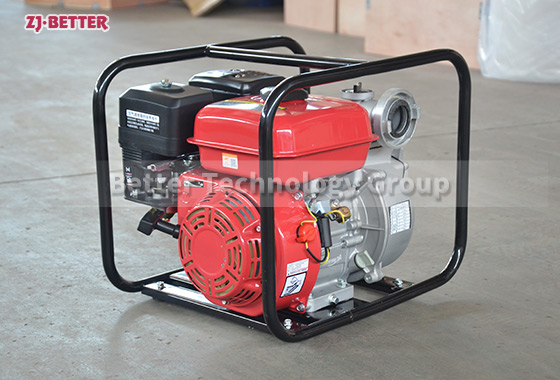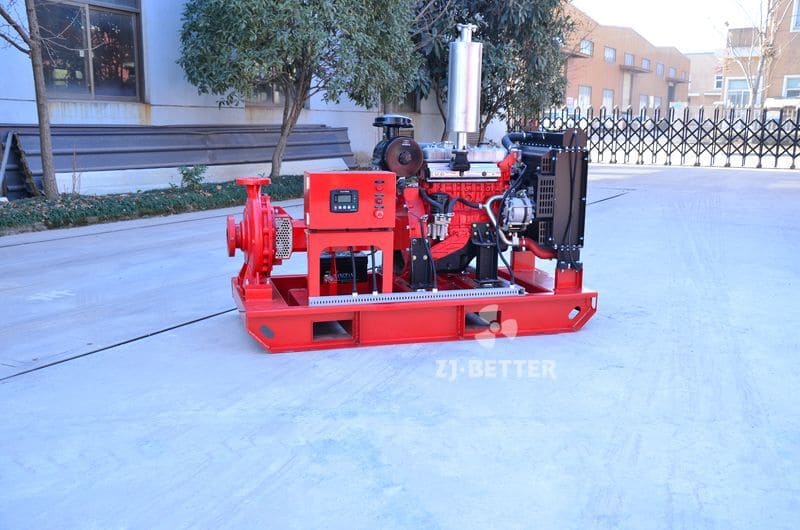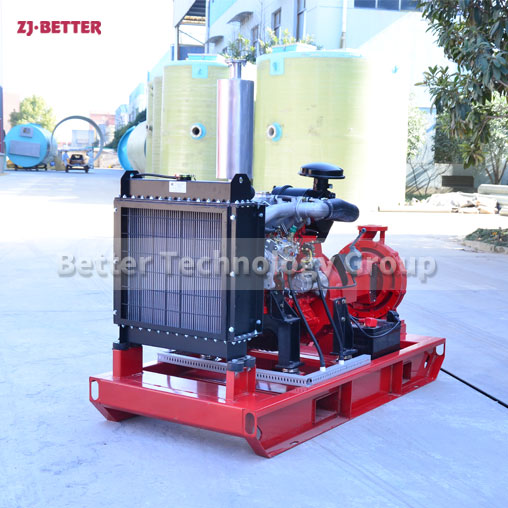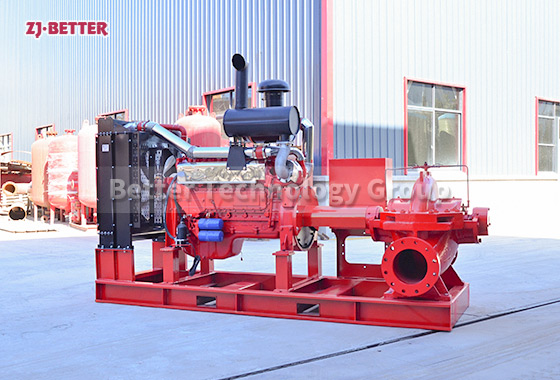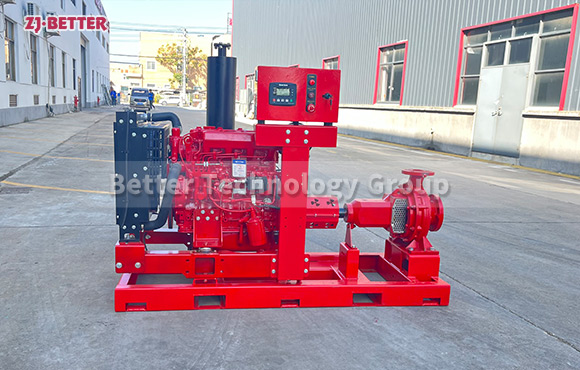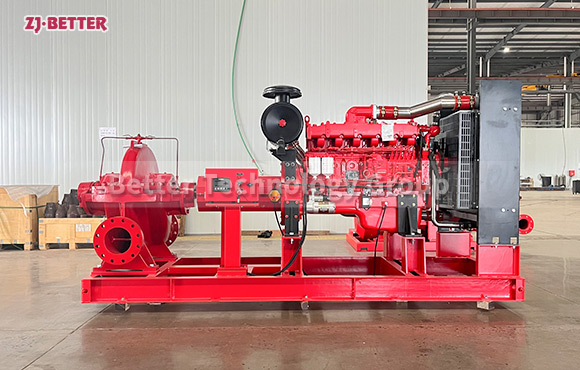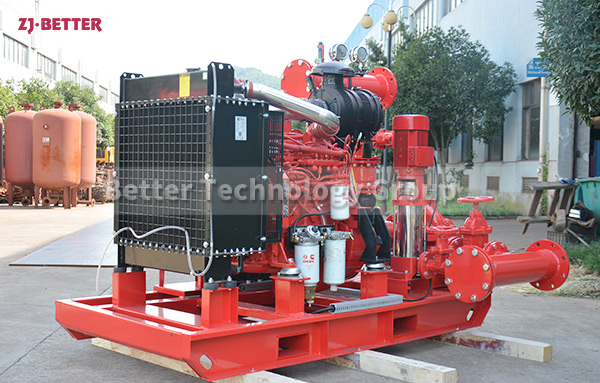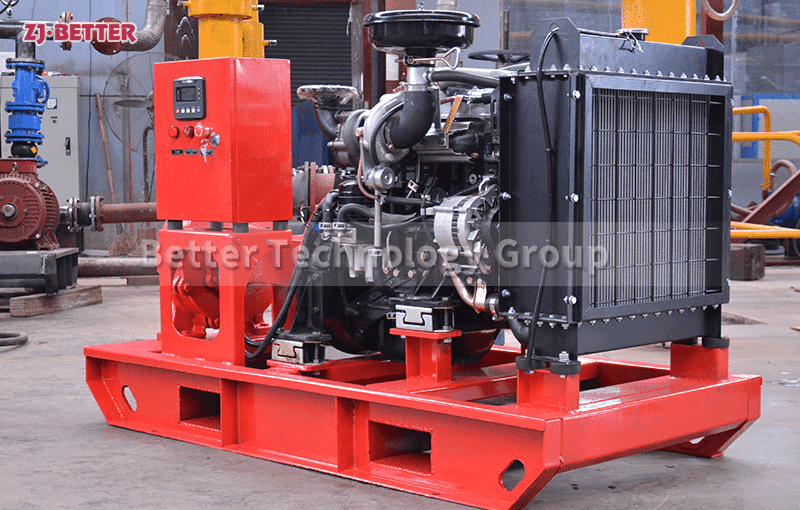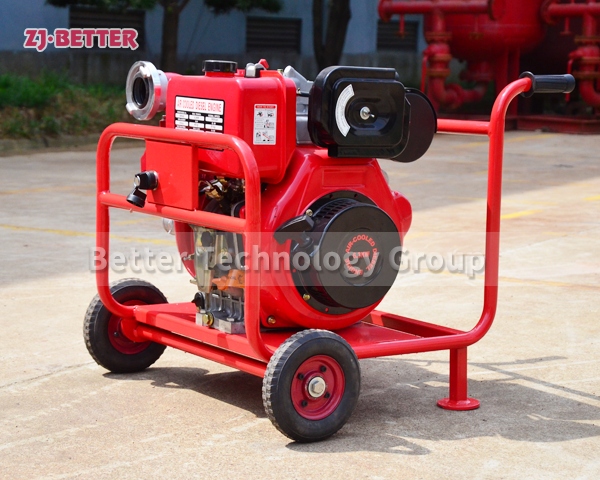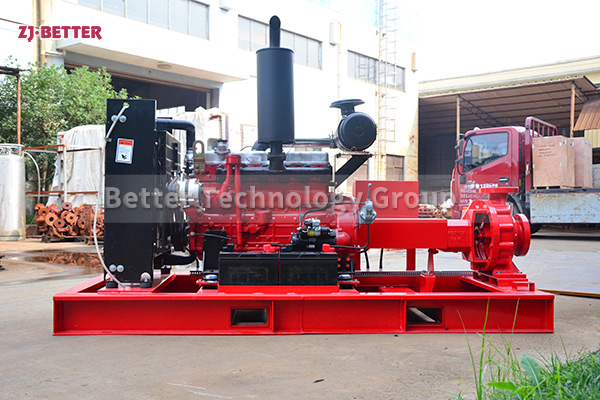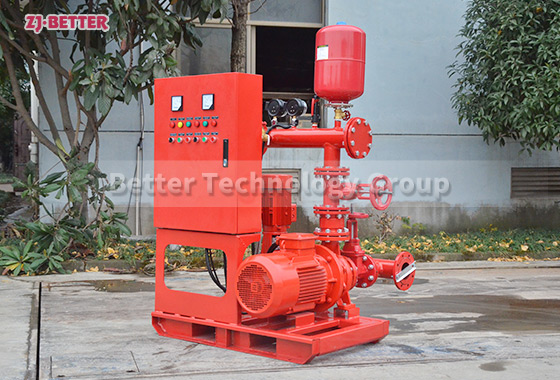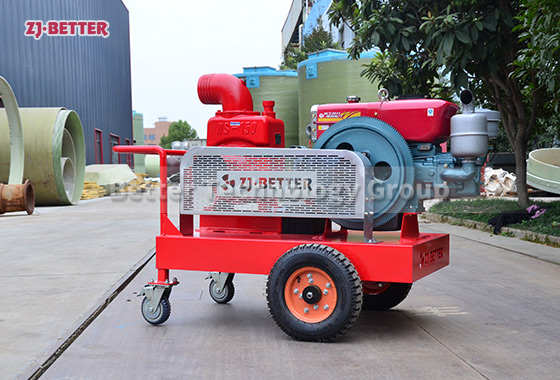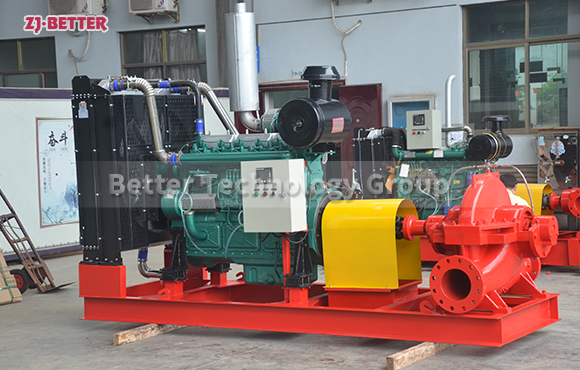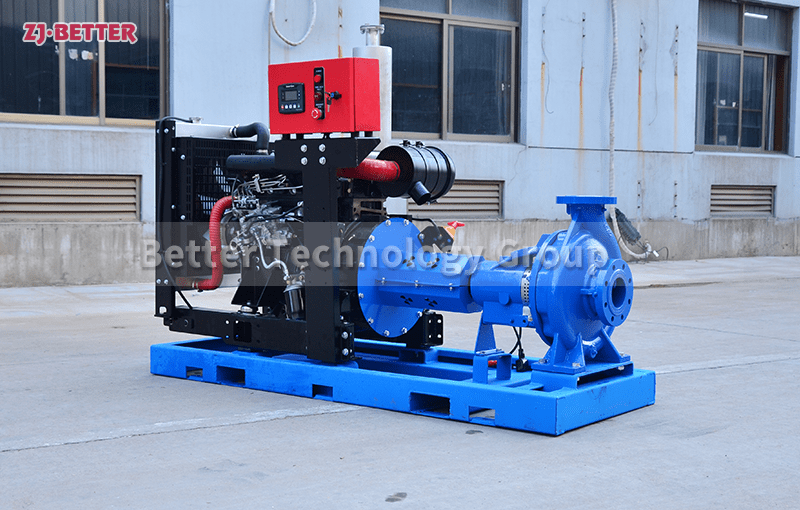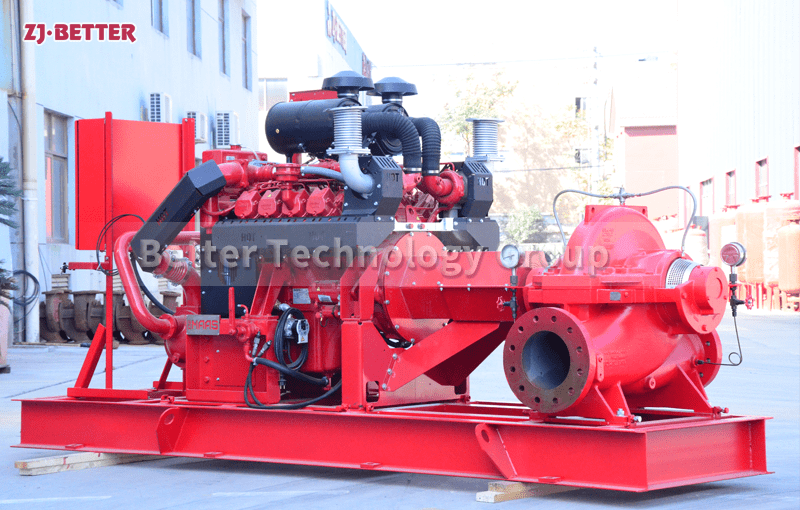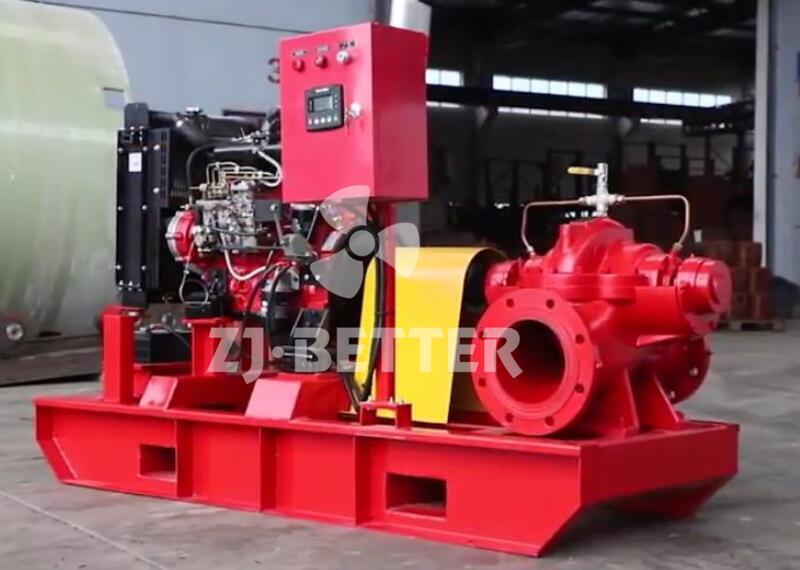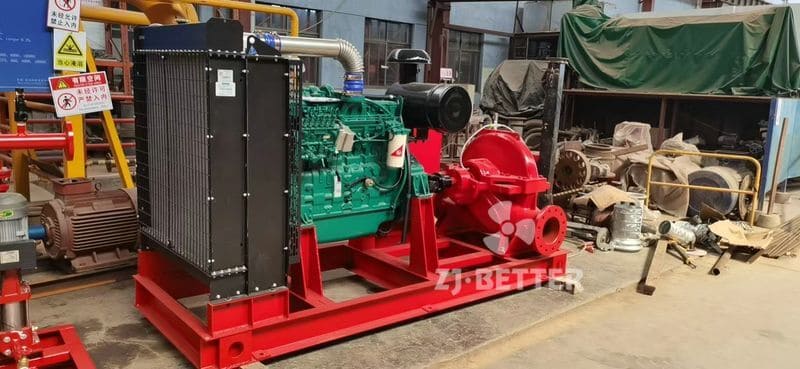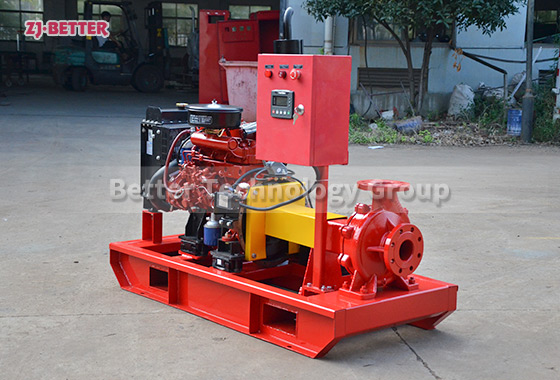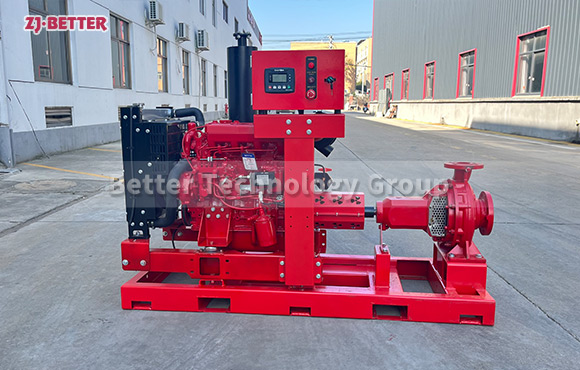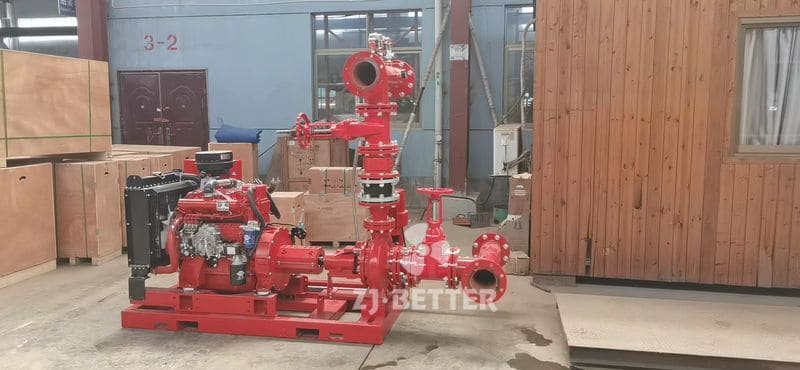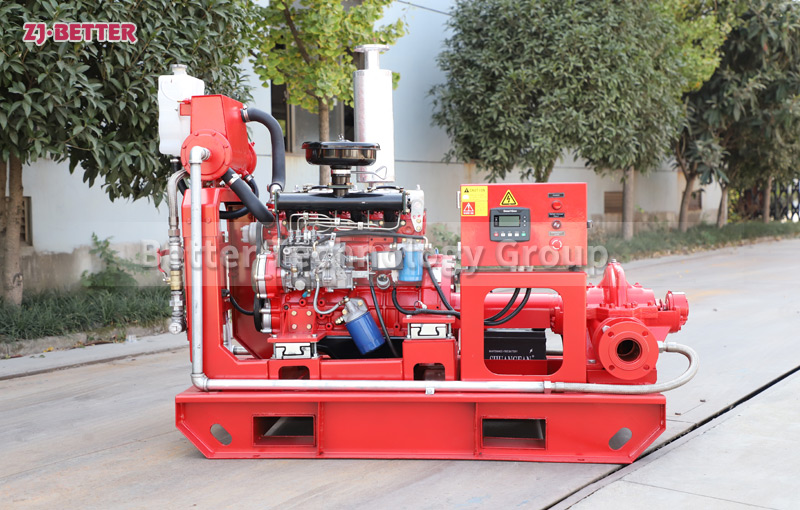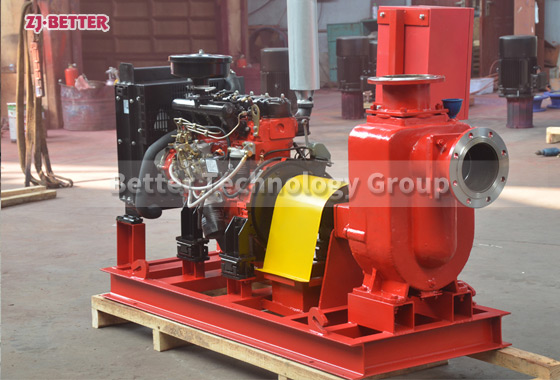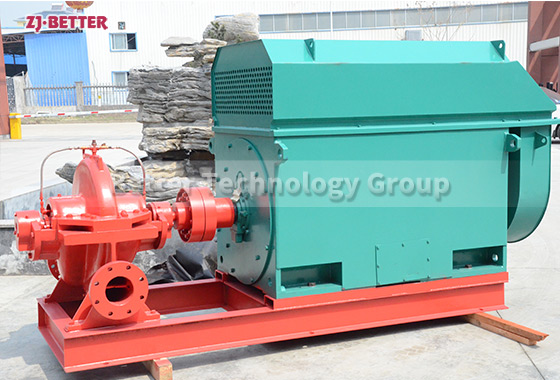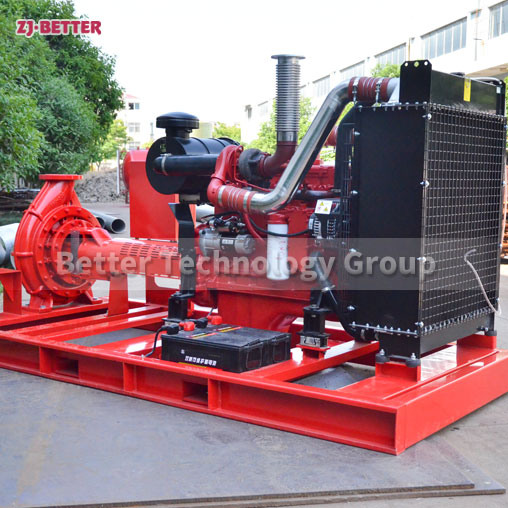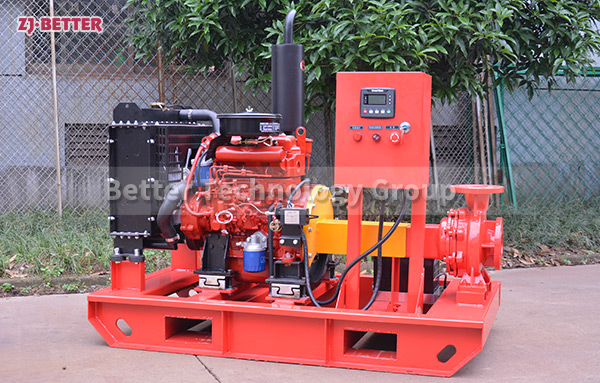Standard Diesel Fire Pump
The diesel engine fire pump has a wide range of lift and flow, which can fully meet the fire water supply in various occasions such as warehouses, docks, airports, petrochemicals, power plants, liquefied gas stations, textiles and other industrial and mining enterprises.
XBC basic unit consists of diesel engine, chassis, cooling refrigerator and fan, high elastic coupling, water pump, diesel tank and control panel and other equipment. The water pump is directly connected with the diesel engine through a highly elastic coupling or a diaphragm coupling, and is jointly installed on the common channel steel chassis. Cooling of the engine The cooling water tank is cooled by the engine-driven fan. The entire cooling system forms a closed loop, and the water tank is also installed on the chassis. The control panel and the unit are separated, and the two are connected by control cables, signal cables and power cables. The basic unit is suitable for fire protection systems with an inverted water source.

